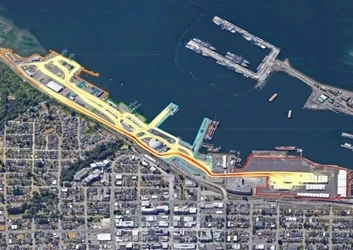
Data governance (DG) is key to data democratization. By establishing standard practices and processes for data handling, enterprises can more effectively ensure data is accessible, usable and safeguarded throughout its entire lifecycle. DG also paves the way for advanced analytics and AI by maximizing data integrity and helping to consolidate data streams.
DG frameworks vary from organization to organization depending on both their regulatory and business needs. To get a better feel for how one global company does it, we sat down with AI & Data Democratization Live speaker Timo Etzold, Senior Data Consultant at Continental.
Here are 3 tidbits he provides:
Craft a Vision for Data
Knowing where data comes from and how you want to be able to use it is a critical consideration for developing your data governance framework. As Timo explains, “A data vision combines the necessary aspects of data for operations of our processes, creation of our products and services that we provide, together with the potential that lies in additional use cases for this data. So, having a holistic understanding of our data and making use of that to provide additional value to inside customers and external customers alike.”
Some questions you can ask yourself and your team to help cultivate your data strategy include:
- How can data help the company achieve its business goals
- What does the current of your data flows and architecture look like? Have you mapped it out yet?
- What changes does the organization need to make to maximize the value of its data activities?
- What is the financial justification of the suggested data activities and how the company will benefit from them?
Data Lakes: Balancing Innovation with Control
Data lakes are centralized repositories that allow enterprises to securely collect, store and provide access to enterprise data. Though data lakes are incredible tools for democratizing data, without sound governance, your data lake will devolve into a data swamp.
At Continental, Timo explains, their data lake started off as sort of an experiment but, over the years, more and more people started using it. Eventually, “at a certain point, we realized, ‘Okay, it's getting out of hand.’ And we had to start finding structures, finding alignment on how we use the data lake.
And that's where we're at right now - trying to find common grounds on how we use the data lake, defining separate structures, speaking about data catalogs to be more transparent about what the system can do apart from just searching the datasets that are in there because it's millions now.”
Build a Cross-Functional Community of Governance Agents
Enterprise data projects require cross-functional collaboration at the highest level. Not only does this help ensure that all business units and functional teams are part of the process, it also helps strengthen governance by ensuring everyone is on the same page, working in unison.
At Continental, they’ve established a “community” of business representatives to help develop and monitor data quality standards. Though this community is still driven by the Group IT team, this team is responsible for overseeing and actioning data-driven projects in compliance with governance standards.
“'It’s really a group of people that bring together different opinions and capabilities into one center. You could call that another center of expertise, a metacenter of expertise if you want. But in the end, it's a community that brings together different perspectives and makes decisions.
……….And there’s more where this came from. Register for AI & Data Democratization FREE Virtual Event taking place this April 27 - 28, 2021 to hear the full story.






























